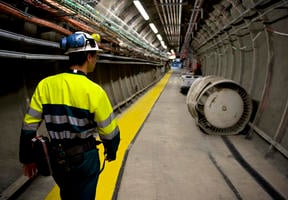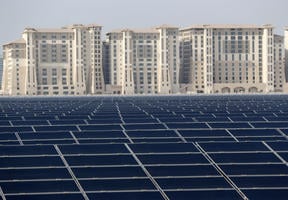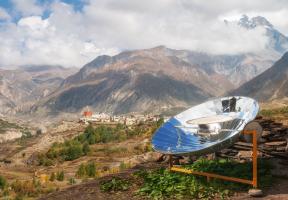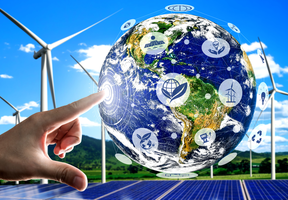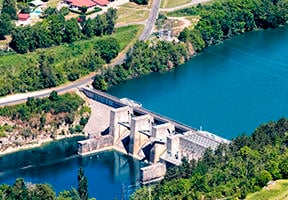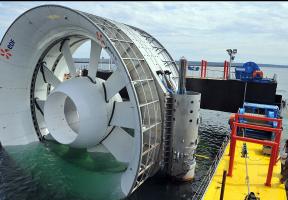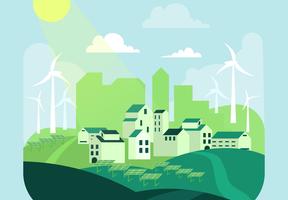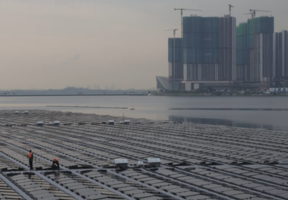Japan's Search for Energy Balance
Updated on 12.08.202310 min read
Japan, a densely populated and highly industrialized country with a limited inhabitable area and virtually no fossil fuels, has been looking into new energy sources and technological innovations for more than 50 years. This proactive approach has enabled it to become one of the world’s leaders in research on renewable energies and .

© JIJI PRESS / AFP - In spite of the Fukushima accident, Japan remains reliant on nuclear energy while developing renewables to balance its energy mix.
Atypical Geographic Conditions
The “Land of the Rising Sun” is an archipelago made up of nearly 7,000 islands and islets. The four largest – Honshu, Hokkaido, Kyushu and Shikoku – account for 97% of Japan’s total surface area. With its 127 million inhabitants concentrated along the narrow coastal plains, the country ranks tenth worldwide in terms of population despite its declining demographics. Greater Tokyo is the world’s most populated metropolitan area, with more than 30 million residents.
Japan is located in a volcanic zone on the Pacific Ring of Fire, an area where several tectonic plates meet. The consequences of this geological configuration are a virtual absence of fossil fuel resources and frequent seismic activity, some of which can be very destructive, putting lives at risk and disrupting grids and industrial facilities.
The country has the world’s third-highest gross domestic product (GDP), with a strong industrial sector, particularly in high-tech segments such as automobiles and electronics.
Reliance on Oil and Gas
Japan is a major consumer and importer of energy1. Fossil fuels, particularly gas, account for 88% of its energy consumption, almost all of which is imported.
This dependence on fossil fuels was worsened by the Fukushima nuclear power plant accident caused by the March 2011 tsunami, which led to the closure of the Japanese reactor. In the months that followed, Japan took unprecedented steps to reduce its consumption including fewer trains, scheduled power outages, mandatory restrictions for industrial companies, flexible working hours, and calls for the participation of citizens.
Despite these efforts, the nuclear shutdown resulted in:
- A surge in the country’s trade deficit, as it had to import and hydrocarbons.
- Raised costs for households and companies (which lost competitiveness).
- Increased CO2 emissions, which peaked in 2013 and only came back down to their 2009 level in 2019.
Climate Objectives
Like the European Union, Japan aims to get to net-zero emissions by 2050, meaning producing no more CO2 emissions than can be captured.
To transition from a carbon-heavy to , Japan has established several pathways involving incredible technological advances – only fitting given its history as a leader in technology:
- The restart of 33 of its existing nuclear reactors, following the nine that resumed activity in 2019, while the search for new, safer and more efficient generations continues.
- The development of all forms of .
- Carbon capture from power plant waste systems, CO2 storage and its reuse in any way possible.
- Systematic improvement of , again through technology. Energy consumption decreased by 16% between 2010 and 2020.
- The rapid transition toward a hydrogen society to use this new energy on a large scale in industry, transportation and housing.
The Limits of Renewables
Japan forecasts surges of 200% in the use of , 300% in and wind power, and a huge 600% in solar photovoltaics by 2030.
However, the country faces underlying challenges. For historical reasons, the power grid does not function at the same frequency in the west and the east of the country, which makes it difficult to optimize the system.
The country’s shortage of space is not conducive to large solar or wind farms. Japan has long been the world’s leader in photovoltaic solar power, even ahead of Germany. In 1994, the authorities implemented a program to help spur growth in the sector by encouraging the installation of rooftop photovoltaic systems. Japan has also launched original innovations such as the creation of floating solar power plants on lakes and bodies of water. For wind power, the country focuses investments on floating wind farms.


